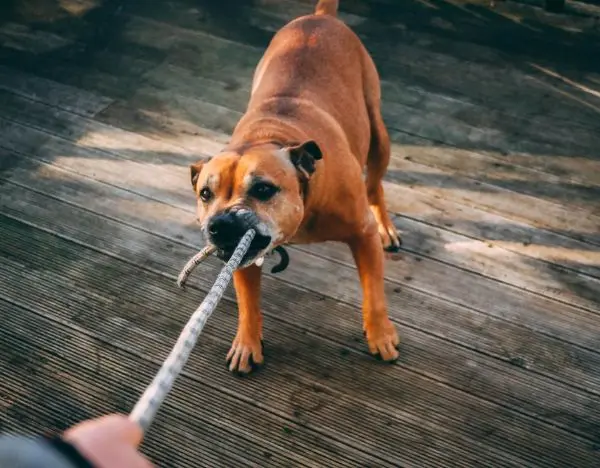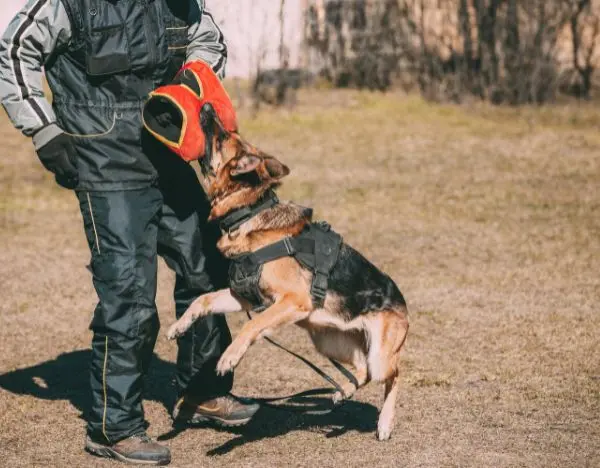
At Accident Aide, we often handle cases involving dog bites and attacks, events that can result in significant physical and emotional trauma for the victims. A common question in these cases is, "Why does a dog attack unprovoked?" Understanding the reasons behind such behavior can help prevent future incidents and comprehend the legal landscape surrounding dog bites. Here's what you need to know.

Unprovoked dog attacks can be distressing and unexpected incidents that leave individuals grappling with questions about the root causes of such behavior. While dogs are generally known for their loyalty and companionship, there are instances where they may display aggressive behavior seemingly without any apparent reason. Understanding the factors contributing to unprovoked dog attacks is crucial for dog owners and the general public. Here are some key insights into why a dog may attack unprovoked:
Dogs, like humans, can experience fear and anxiety. Unfamiliar environments, loud noises, or even certain scents can trigger stress in dogs, leading them to react aggressively in an attempt to protect themselves.
Dogs are territorial animals, and they may perceive unfamiliar individuals or animals as a threat to their territory. This territorial instinct can result in unprovoked aggression as the dog attempts to establish dominance and protect its perceived space.
Physical discomfort or pain due to underlying health issues can contribute to uncharacteristic aggression in dogs. It's essential for dog owners to regularly monitor their pets' health and seek veterinary attention if any signs of discomfort or illness arise.
Dogs that haven't been adequately socialized may feel uneasy or threatened in the presence of strangers or other animals. This lack of exposure to diverse environments can make them more prone to unprovoked aggressive behavior.
Dogs have a natural instinct to protect their owners and their families. In some cases, perceived threats to family members or even the dog itself can trigger protective instincts, leading to unprovoked attacks.
Dogs that have experienced trauma or abuse in the past may exhibit aggressive behavior as a defensive mechanism. Traumatic experiences can impact a dog's psyche, influencing its reactions to various stimuli.
Recognizing the signs of aggression or agitation in dogs is essential for promoting safety and preventing potential incidents. While most dogs are friendly and well-behaved, understanding the cues indicating a dog may feel threatened or uneasy is crucial. Here are key signs to watch for when assessing a dog's behavior:
Pay attention to a dog's body language, as it can provide valuable insights into their emotional state. Signs of aggression may include a stiff body, raised hackles along the back, and a tense posture. Conversely, an agitated dog may exhibit restlessness, pacing, or an inability to relax.
The position of a dog's ears and tail can provide important information. Aggressive dogs may have erect ears and a raised tail, signaling dominance or a threat display. An agitated dog may have flattened ears, signaling discomfort or fear, and a tucked tail indicating submission or stress.
The hackles, or the hairs along a dog's back, may stand up when they feel threatened or agitated. Raised hackles can be a clear visual cue that a dog is on edge and may be inclined to show aggression.
A dog's facial expressions can convey a lot about its mood. A dog showing signs of aggression may display intense staring, bared teeth, and a wrinkled muzzle. An agitated dog might exhibit excessive panting, lip licking, or a furrowed brow.
Vocalizations are common indicators of a dog's emotional state. Aggressive dogs may growl with a low, rumbling sound, while an agitated dog might bark excessively or in a high-pitched tone. Pay attention to the context in which these vocalizations occur.
Aggressive dogs may exhibit avoidance behavior, such as turning away or avoiding eye contact. On the other hand, an agitated dog may become overly stiff, with a reluctance to move or a frozen posture.
Fear is a common trigger for aggression in dogs. Signs of fear include cowering, trembling and attempts to retreat. Dogs in a state of fear may perceive a situation as threatening, leading to defensive or aggressive responses.
Dog attacks can lead to a wide range of physical and psychological injuries, some of which may have long-term consequences for the victim. Understanding the spectrum of injuries associated with dog attacks is crucial for medical professionals and legal teams working on personal injury cases like those handled by Accident AIde. Here's an overview of common injuries resulting from dog attacks:
In the unfortunate event of an unprovoked dog attack, victims may find themselves facing physical injuries, emotional distress, and unexpected medical expenses. Pursuing a legal case in such circumstances becomes essential to seek compensation for damages and hold responsible parties accountable. Here is a guide on pursuing a legal case following an unprovoked dog attack:
The first priority after a dog attack is to seek immediate medical attention. Even seemingly minor injuries can have serious consequences, and a prompt medical evaluation creates a crucial record of the incident and the extent of the injuries.
Thorough documentation is crucial for building a strong legal case. Take photographs of the scene, your injuries, and any property damage caused during the attack. Collect contact information from any witnesses who may have observed the incident.
Contact local animal control or law enforcement authorities to report the dog attack. Providing an official record of the incident can aid in determining the liability of the dog owner and can be valuable evidence in a legal proceeding.
If possible, identify and obtain contact information for the dog owner. This information is vital for initiating legal proceedings. If the dog is a stray, animal control authorities may be able to assist in identifying the owner.
Preserve any evidence related to the incident, including clothing worn during the attack and any items damaged. This evidence can support your case and establish the severity of the situation.
Legal representation is crucial in navigating the complexities of a personal injury case. Consult with an experienced personal injury attorney who specializes in dog bite cases. They can provide guidance on the applicable laws, assess the strength of your case, and help you understand your rights.
Establishing liability is a key aspect of a dog attack case. Laws regarding dog owner liability vary, and an attorney can help determine whether the owner is legally responsible for the dog's actions.
Your attorney will work towards a fair settlement with the dog owner's insurance company. If a settlement cannot be reached, they may advise pursuing litigation to seek compensation through the court system.
Being attacked by a dog can be a terrifying and dangerous situation. Knowing the right steps to take immediately during and after an attack can significantly reduce the risk of serious injury and improve the outcome of any necessary legal actions. Here’s a guideline on what to do if you're attacked by a dog:
We understand the profound impact such incidents can have on victims and their families. Dog attacks can result in serious physical injuries, emotional trauma, and substantial financial burdens due to medical bills and lost wages. Navigating the aftermath of a dog attack can be overwhelming, but you don't have to face it alone. Here's how a dog attack lawyer from our firm can help:
If you or a loved one has been the victim of a dog attack, don't navigate this challenging time alone. The experienced team at Accident Aide is here to provide the legal expertise, support, and guidance you need. From investigating the incident to fighting for the compensation you deserve, we're with you every step of the way. Contact us today for a consultation, and let us help you get on the path to recovery and justice. Your safety and well-being are our top priorities.